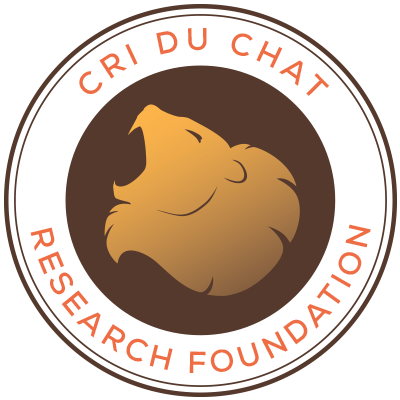5p- syndrome Treatment
Is there a Treatment for 5p- syndrome?
When a loved one first gets a diagnosed, its common to wonder if there is a treatment or cure for 5p- syndrome. The answer is complex:
There are treatments, drugs and medical procedures that can help address the symptoms of 5p- syndrome. There are no treatments or drugs on the market that can address the underlying 5p- syndrome protein deficiencies. There are no treatments or drugs on the marker that can repair the deletion of genes that cause 5p- syndrome.
But, there are gene therapy techniques that already exist and may be able to repair isolated critical genes in the future. Cri du Chat Research Foundation is helping to accelerate or improve each for the 5p- syndrome community. Research for treatment is happening due to the efforts of our organization!
As mentioned, there is currently no cure or specific treatment for the underlying condition that causes 5p- syndrome. However, intense therapy can help 5p- syndrome patients improve their skills and reach milestones.
The most common therapies available are Physical Therapy, Occupational Therapy, Speech Therapy and Applied Behavioral Analysis (ABA) Therapy. 5p- syndrome patients may respond well to alternative therapies, including hippotherapy, aqua therapy, music therapy, PROMPT therapy. 5p- syndrome individuals will continue to make progress and reach key milestones at their own pace.
Developmental Delay
An individualized approach that requires ongoing multiple types of therapies is likely to be needed. Some combination of therapies below has been helpful in stimulating development.
· Occupational therapy
· Physical therapy
· Speech Therapy
· Feeding Therapy
· Behavioral Therapy
· Vision Therapy
· Alternative Therapies: Hippotherapy, aqua therapy, music therapy etc
Motor and Sensory Processing
Many individuals with 5p- syndrome do achieve the milestone of walking, although some may never walk independently. Achieving this milestone often requires intensive physical and occupational therapy. Sensory body suits can be beneficial in increasing body awareness, and careful attention to a sensory diet is crucial. Activities like spinning and swinging, under the supervision of an occupational therapist, can help activate the vestibular system and improve balance. Auditory stimulation programs, such as the Tomatis Method and Therapeutic Listening, may also support cognitive processes and sound, aiding in communication, language development, and sensory integration. Additionally, some individuals may need equipment to support motor development, such as standers, walkers, and braces. Lifelong postural support should be made a priority by the PT & OT teams & families to try to avoid the need for scoliosis repair and promote for efficient use of hands. Making sure your loved one’s team has a good understanding of how to support motor planning and sequencing challenges will be very helpful.
Sleep
Sleep disruption is common in 5p- syndrome. Some individuals with 5p- syndrome require prescription medication to stay asleep. Sleep safety should be considered. Consider a sleep study to determine if other factors such as sleep apnea or restless leg syndrome are impacting sleep.
Speech
Many individuals with 5p- syndrome have some speech. The use of an Augmentative and Alternative Communication (AAC) device can help to model language, expand on thought processes & verbal speech as well as support ongoing communication needs. Individuals may also benefit from working with a Speech Pathologist experienced in the PROMPT therapy approach to improve speech motor planning challenges and to improve articulation of verbal speech. Early consultation with a feeding therapist is important, as many individuals experience dysphagia or swallowing difficulties. A feeding therapist can provide oral motor exercises and recommend a suitable oral motor regimen to promote oral awareness and corrective chewing patterns. Some babies may need thickened feeds early on to prevent aspiration during feeding, and some individuals may require a g-tube. Close follow-up with a team that has expertise in dysphagia is needed.
Behavior
A psychiatrist and behaviorist may be part of a 5p- syndrome patient’s team to offer guidance on managing behaviors. Behavior therapy is often helpful, and medications may also be prescribed as needed. Many educational teams and families use Behavior Intervention Plans (BIPs) to address behaviors. Reinforcing positive behaviors while minimizing attention to negative behaviors, along with redirecting undesirable actions, has proven to be effective.
Vision
A vision educator with expertise in Cortical Visual Impairment should be added to the education team. The vision educator should work closing with the classroom teachers and para to present the student with appropriately adapted classroom materials and environment.
Education
Many children with 5p- syndrome demonstrate strong receptive abilities and need help accessing their cognitive skills. Individuals can experience success in academic areas. Individuals can become proficient readers. ABA style teaching can be helpful early on to lay foundational academic skills. Individuals can go on to benefit from an inclusive educational setting with support. Special education teachers should consider utilizing Augmentative and Alternative Communication (AAC) devices utilizing different apps and adaptive keyboards to help access the curriculum. A multi-sensory instruction approach is essential when presenting content. Teaching strategies that scaffold the curriculum, reduce demands on working memory, and support the completion of multi-step tasks may also be beneficial. Additionally, using an FM system in school can enhance hearing, improve attention, and assist with auditory processing challenges.
Activities of Daily Living
Caregivers of individuals with 5p- syndrome should maintain high expectations for their loved ones, encouraging them to participate in activities of daily living to the best of their ability. As motor planning improves and fine motor skills develop, individuals should be encouraged to do as much independently as possible. Activities of daily living should be prioritized in both school and home routines to promote growth and independence.
